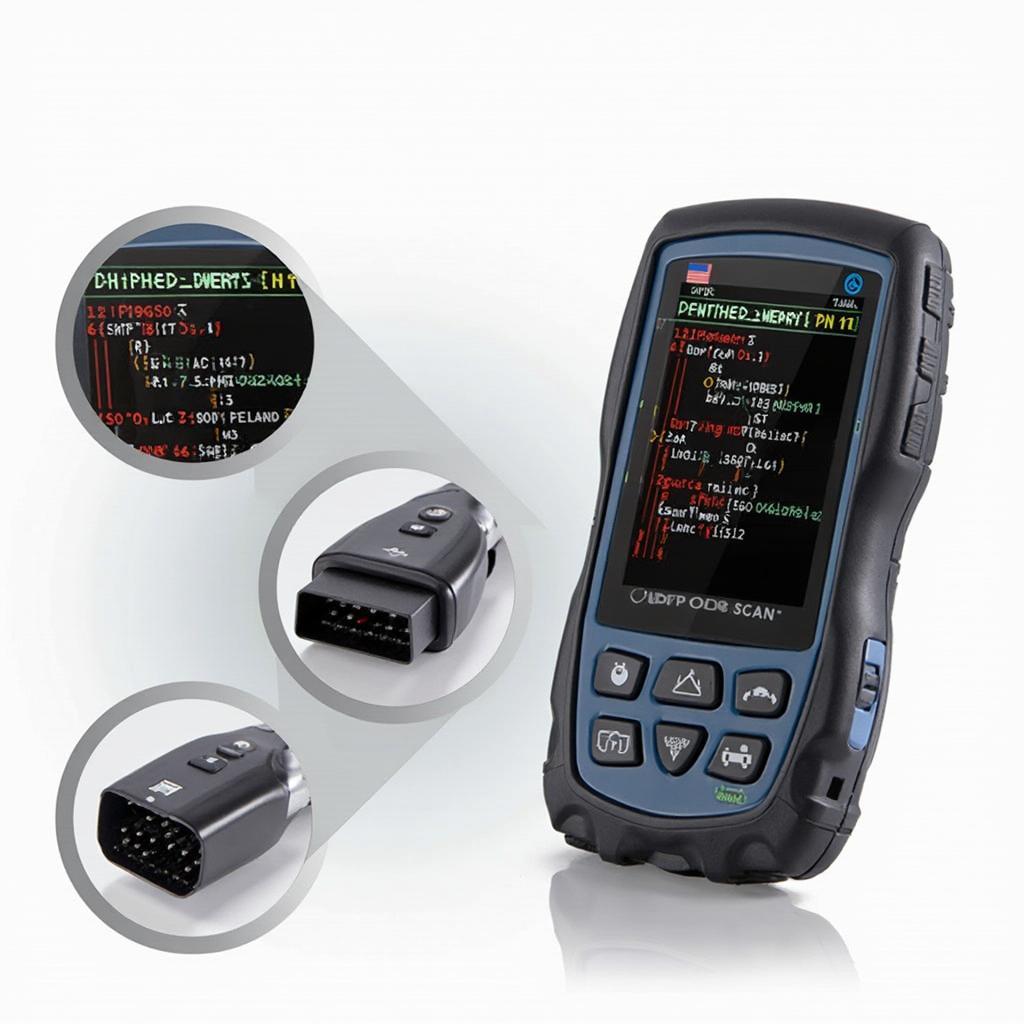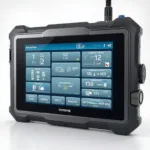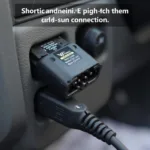The Actron OBD2 Pocketscan is a powerful tool that can help you understand and diagnose car problems. Whether you’re a seasoned mechanic or a car enthusiast, this handy device can save you time and money. This guide provides clear and concise directions to use the Actron OBD2 Pocketscan effectively.
Understanding Your Actron OBD2 Pocketscan
Before diving into the how-to, let’s clarify what this device does. The Actron OBD2 Pocketscan reads your car’s computer system, specifically the On-Board Diagnostics (OBD) system. It deciphers the Diagnostic Trouble Codes (DTCs) your car generates when it detects an issue, translating complex codes into understandable language.
Getting Started: Locating the OBD2 Port
The first step is locating your car’s OBD2 port. Don’t worry; it’s simpler than it sounds. This port is usually located under the driver’s side dashboard, near the steering column. In some cars, it might be hidden behind a small panel. If you’re unsure, refer to your car’s manual for the precise location.
Connecting Your Actron OBD2 Pocketscan
Once you’ve located the OBD2 port, connect your Actron OBD2 Pocketscan. The device is designed to fit snugly into the port. Ensure it’s securely connected before proceeding.
Powering Up and Navigating the Menu
With the device connected, turn on your car’s ignition. This powers up the Actron OBD2 Pocketscan. The device’s screen will illuminate, presenting you with a menu.
The menu might vary slightly depending on your specific Actron Pocketscan model, but the basic functionalities remain the same. You’ll find options like “Read Codes,” “Erase Codes,” “Live Data,” and more.
Reading Diagnostic Trouble Codes (DTCs)
To read the DTCs stored in your car’s computer, navigate to the “Read Codes” option using the buttons on the device. Press the corresponding button to select “Read Codes.”
The Actron OBD2 Pocketscan will then communicate with your car’s computer, retrieving any stored DTCs. These codes will be displayed on the screen, often along with a brief description of the potential problem.
Understanding and Addressing DTCs
The DTCs provide valuable clues about potential issues. For instance, a code like “P0420” often indicates a problem with the catalytic converter system.
Important Note: While the Actron OBD2 Pocketscan helps identify potential issues, it’s crucial to remember that it doesn’t provide a definitive diagnosis. For accurate diagnosis and repair, consult a qualified mechanic, especially if you’re not familiar with automotive systems.
You can often find detailed information about specific DTCs in your car’s manual. Alternatively, resources like codes for obd2 pocketscan can provide comprehensive explanations and potential solutions.
Erasing Diagnostic Trouble Codes
Once you’ve addressed the underlying issue, you can erase the DTCs from your car’s computer. Navigate to the “Erase Codes” option on your Actron OBD2 Pocketscan and follow the on-screen prompts.
Caution: Only erase codes after you’ve resolved the issue. Erasing codes prematurely can mask potential problems and make future diagnosis more challenging.
Exploring Live Data
The Actron OBD2 Pocketscan also allows you to view “Live Data” from your car’s sensors in real-time. This feature provides insights into various parameters like engine speed, coolant temperature, oxygen sensor readings, and more.
Live data can be valuable for monitoring your car’s performance and detecting potential issues before they escalate.
Utilizing Additional Features
Depending on your specific Actron OBD2 Pocketscan model, you might have access to additional features:
- Freeze Frame Data: This feature captures a snapshot of your car’s sensor readings at the time a DTC was triggered.
- Smog Test Readiness: This feature indicates if your car’s emission system is ready for a smog test.
Conclusion
The Actron OBD2 Pocketscan is an invaluable tool for any car owner. By following these directions, you can confidently use it to understand your car’s health, identify potential issues, and save money on unnecessary repairs. Remember to consult a qualified mechanic for diagnosis and repair, especially for complex issues.
FAQs
1. Can I use the Actron OBD2 Pocketscan on any car?
The Actron OBD2 Pocketscan is compatible with most cars manufactured after 1996 that comply with OBD2 standards. However, it’s always best to check the device’s compatibility with your specific car model before purchasing.
2. Why am I not getting any readings on my Actron OBD2 Pocketscan?
If you’re not getting any readings, ensure the device is properly connected to the OBD2 port and your car’s ignition is turned on. If the issue persists, there might be a problem with the device or your car’s OBD system.
3. What should I do if I get a “Link Error” message?
A “Link Error” message usually indicates a communication problem between the device and your car’s computer. Double-check the connection and try again. If the error persists, there might be a fault with the device, the OBD2 port, or your car’s wiring.
4. Can I update my Actron OBD2 Pocketscan?
Some Actron OBD2 Pocketscan models might have firmware updates available. Refer to the manufacturer’s website or your device’s user manual for information on updates and procedures.
5. Where can I find more information about specific DTCs?
You can find detailed information about specific DTCs in your car’s manual. Online resources like codes for obd2 pocketscan can also provide comprehensive explanations and potential solutions.
If you need further assistance or have any questions, our dedicated support team is here to help 24/7. Contact us via WhatsApp: +1(641)206-8880, Email: [email protected].


